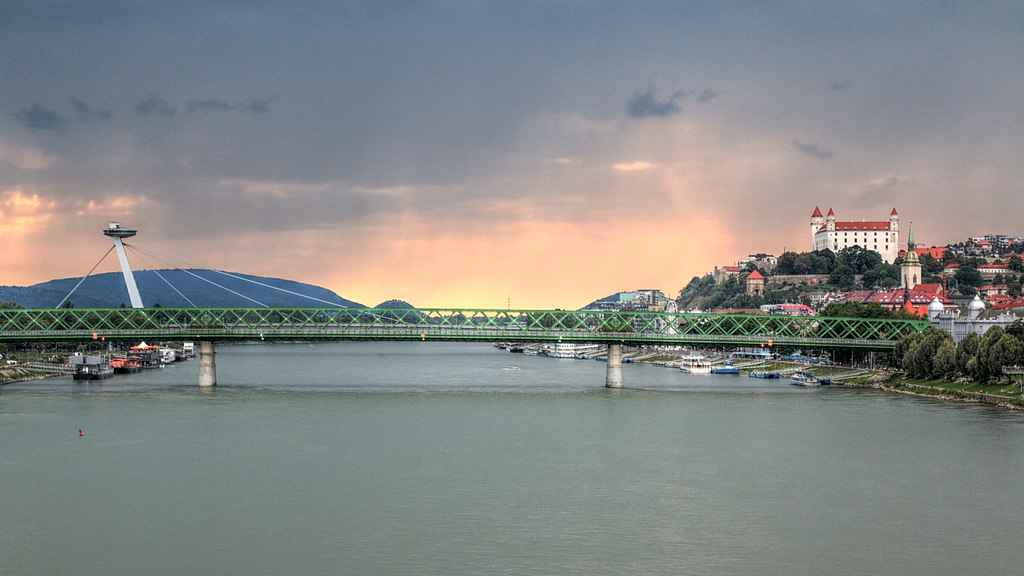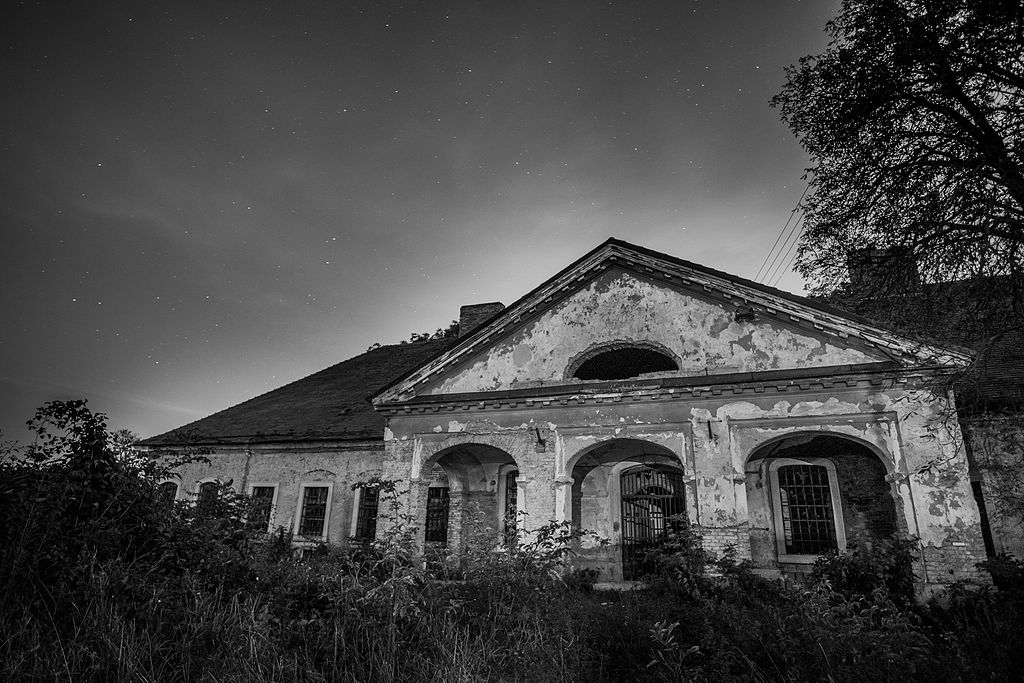Getting lost in the lost lands beyond Hungary’s borders keeps bringing me to improbable places, peoples, and history that I could never have imagined prior to developing my itinerary. I now find myself in the vicinity of the Austria-Hungary-Slovakia tripoint going to multiple villages. This has brought me to a Mitteleuropa in miniature. A microregion where the German, Hungarian, and Slavic worlds converge. The ethnic diversity that defined much of Central and Eastern Europe prior to the World Wars can still be found here. Differing ethnic groups, languages, and religions exist side by side. Despite the radical transformation this area experienced after the Austro-Hungarian Empire’s disintegration several different ethnic groups remain.
Some villages have as many as four different names. German, Hungarian, Slovakian and Croatian. The latter was a head spinner. The Croatian presence proves that this part of Europe is still ethnically mixed in ways that defy logic. Croatia’s border is 240 kilometers south of the Austria-Hungary-Slovakia tripoint. Nevertheless, Croatians have a long history in the Burgenland, the easternmost province in Austria. The area was formerly the Kingdom of Hungary’s western extremity. To make matters even more confusing, one of the region’s most Croatian villages is in Slovakia. This multicultural mix-up is worth investigating. That is why my next destination is Jarovce, also known by its Croatian name Hrvastski Jandrof.

Cause for celebration – Burgenland Croatians in traditional dress
Interior Lives – The Other Croatia
In the western world, Croatia has a certain reputation, as do Croatians. That reputation is almost entirely based upon one of the world’s most dramatic coastlines. The shimmering Adriatic with thousands of islands dotting the seascape, the walled medieval city of Dubrovnik, and Roman Emperor Diocletian’s palace in Split are among the Croatian coast’s many treasures. Both Dubrovnik and Split are within spitting distance of the Adriatic. As are the millions who visit the country every year. Croatia’s popular image is of the sea, by the sea, and for the sea. It is thus easy to imagine that Croatians are a nation of seafaring people. If not by watercraft, then by the craft of selling their coastline’s beauty to earn a living in what is an inhospitable environment. Agriculture and Dalmatia are not synonymous. The popular image does not account for the other Croatia found further inland. Parts of Croatia are intensely pastoral. I found this out during my first visit to Croatia as I rode a train across the province of Slavonia. It looked more like an extension of Hungary than anything popularly advertised as Croatia. Slavonia was a part of the country where tourists do not tread.
I never bothered telling anyone I had been to Croatia after traveling through Slavonia. I did not want to get asked questions about the Croatian coastline and Adriatic Sea. I doubted anyone with images of Croatia dancing in their head would have believed me. All I saw from my train window were fallow fields on the verge of springing to life. Though the Slavonian landscape was extremely monotonous, I still appreciated the experience. Slavonia showed me that Croatia was much more than a spectacular shoreline and sea. Historically a large part of Croatia had a past that was based upon agriculture. These agrarian skills came in handy for Croatians who resettled in western Hungary after the Ottoman Turks’ incursion into Croatia’s interior during the early 16th century. This was the start of a long history in the area that continues right up though today.

Looking up – St Nicholas Church in Jarovce (Credit: Wizzard)
Community Ties – Hrvastski Jandrof
The more successful an ethnic group is in a different empire or nation, the more likely they are to become assimilated. By that measure, what are now known as the Burgenland Croatians (easternmost province in Austria) have been wildly successful. That has made it hard to distinguish them in Austria. The best estimate is that there are 50,000 Croatians living in eastern and lower Austria. 70% of these live in Burgenland, the rest are not far away in Vienna. The culture and unique language of the Burgenland Croatians has been under threat for over a century. First by Magyarization, then fascism. These forces upended their world. In all too many cases, they were treated as second class citizens. Assimilationist tendencies continued to threaten their identity in post-World War II Austria. Despite this, there are still pockets of ethnic Croatians to be found in many villages in eastern Austria. A few outlier communities of Croatians can be found in Hungary and Slovakia. The keen observer can find them in towns that have multiple names, one of which is often Croatian.
A name can tell you a lot about a place. That is the case with Jarovce, a small village near the Danube in Slovakia that changed hands multiple times during the 20th century. For instance, the Hungarian name for Jarovce is Horvathjarfalu which means Croatian village. The name makes explicit the Croatian presence in the village. As does its Croatian derivation, Hrvastski Jandrof. That is for a very good reason. Jarovce is the only village in Slovakia where Croatians make up over 20% of the population. That number is down considerably from 80% at the turn of the 20th century. Much of that decline is due to assimilation. The two hundred plus Croatians in Jarovce might sound small, but living in a small village allows them to still make their presence felt. They would never be noticed in a city. That is what happened to the Croatians who moved to Vienna. It is hard to blame them for doing so because Vienna offers countless opportunities. Earning a living by farming in villages like Jarovce is no longer viable for most of the population.

A long time coming – The road to Jarovce (Credit: Lure)
Holding Out – Present Tense
The Croatian presence in Jarovce is tenuous. How much longer they can hold on is anyone’s guess. That they made it to the present is remarkable. Croatians have always been outnumbered by other ethnic groups in the area. They always will be. Assimilation is both an opportunity and drawback. An opportunity to become part of the dominant national group. And the privileges associated with it. A drawback as it can lead to the loss of ancestral and ethnic identity. One they have managed to preserve against incredible odds. What is Jarovce without its Croatian presence? That question may eventually have to be answered. Thankfully, not right now.
Click here for: The Places In Between – Journey To Kittsee (The Lost Lands #41)












